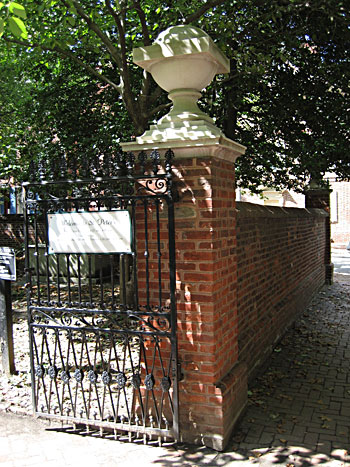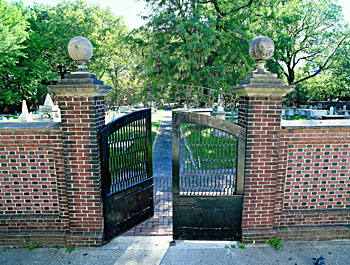Access and Security
Pedestrian and Universal (Handicap) Access
All cemeteries have pedestrian access but few offer universal access due to the conditions of slope, limited or unpaved pathways, and the narrowness of the paths. Paths should be maintained in good condition and excessive slopes minimized if possible. Universal access upgrades should be accommodated where needed and feasible. Gates and paths should be of an appropriate width to accommodate universal access.
Vehicular Access
Vehicular access is a regular feature both historically and for present use. Many sites, especially the larger rural cemeteries, have vehicular routes for visitors. Construct pathways and drives with appropriate paving materials to minimize water runoff and avoid vehicular damage to any character defining features. Signage directing the flow of traffic and indicating appropriate parking locations are essential to maintaining the character of a cemetery. Gate openings should be wide enough to accommodate all anticipated service vehicles.
Security
Few cemeteries have lockable gates, but if gates are present, they usually link to fences and walls. Ideally, all historic cemeteries should be open to public access during the day, thus encouraging visitation and discouraging vandalism. Security provisions may be necessary to protect the resource at night if fencing and gates are not available. Inspect and repair fences and walls on a periodic basis to prevent unwanted intrusion or vandalism. Security lighting at the entry gates or around buildings within the cemetery can discourage intrusions.
 |
| Cemetery gates and walls |
 |
| Cemetery gates and walls |